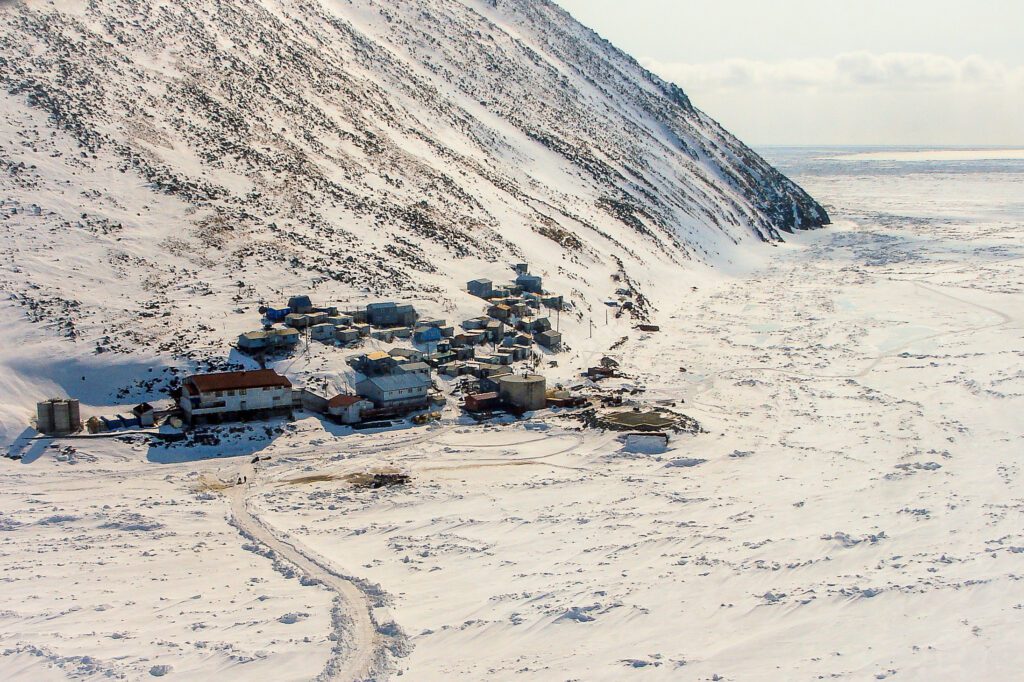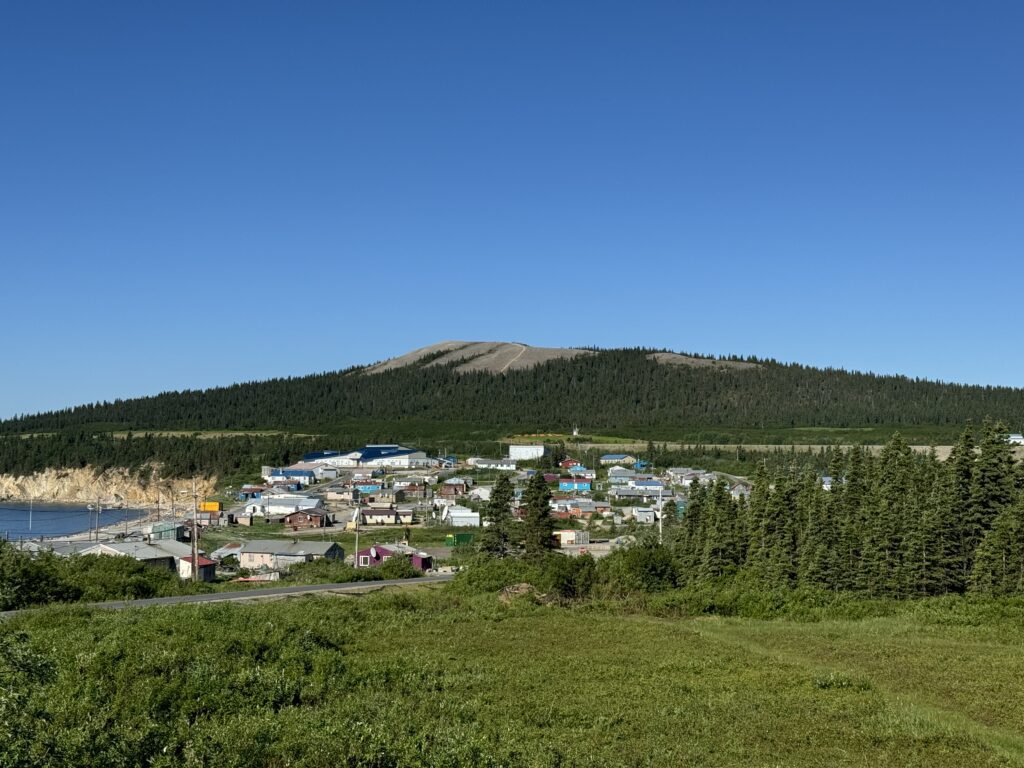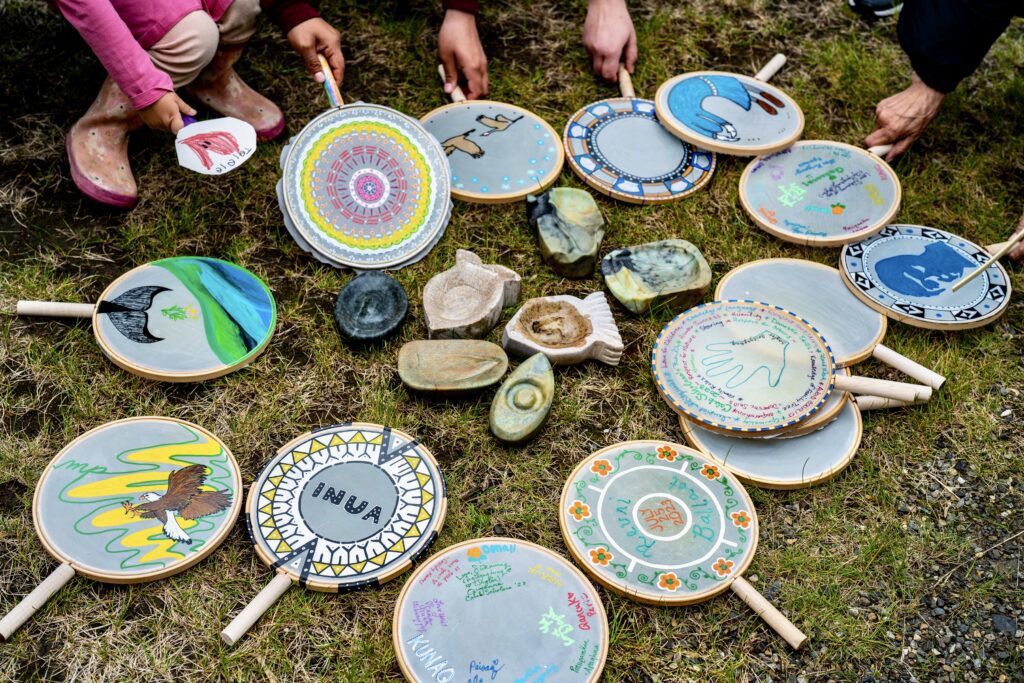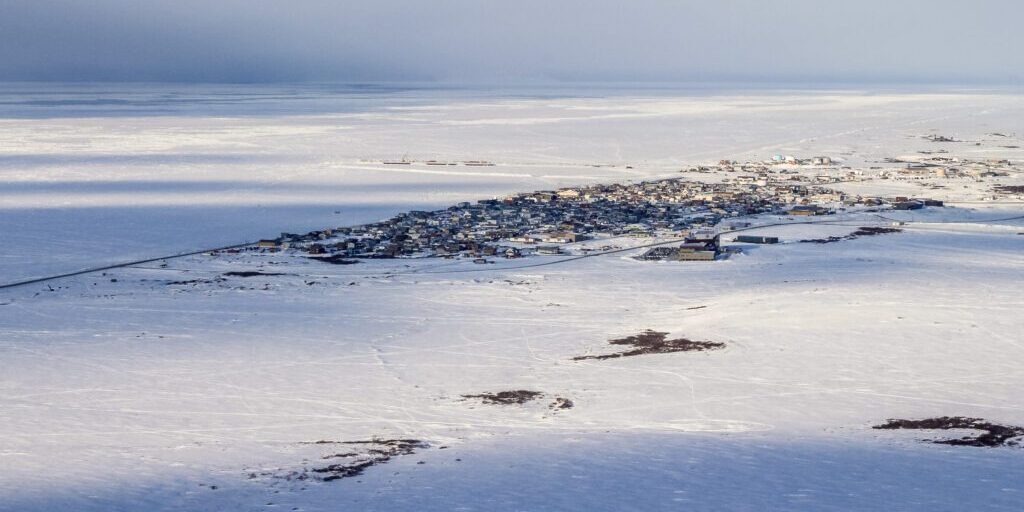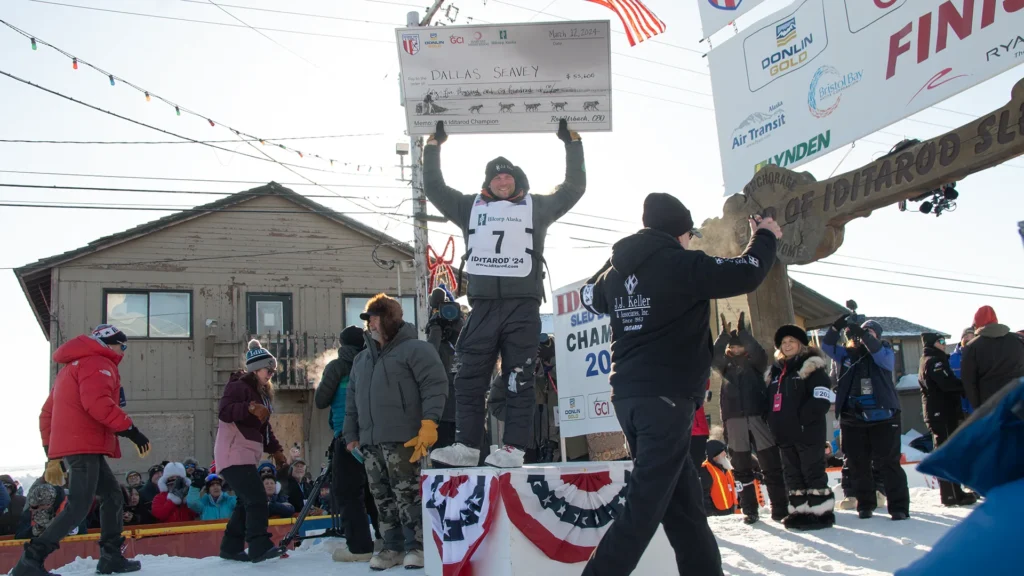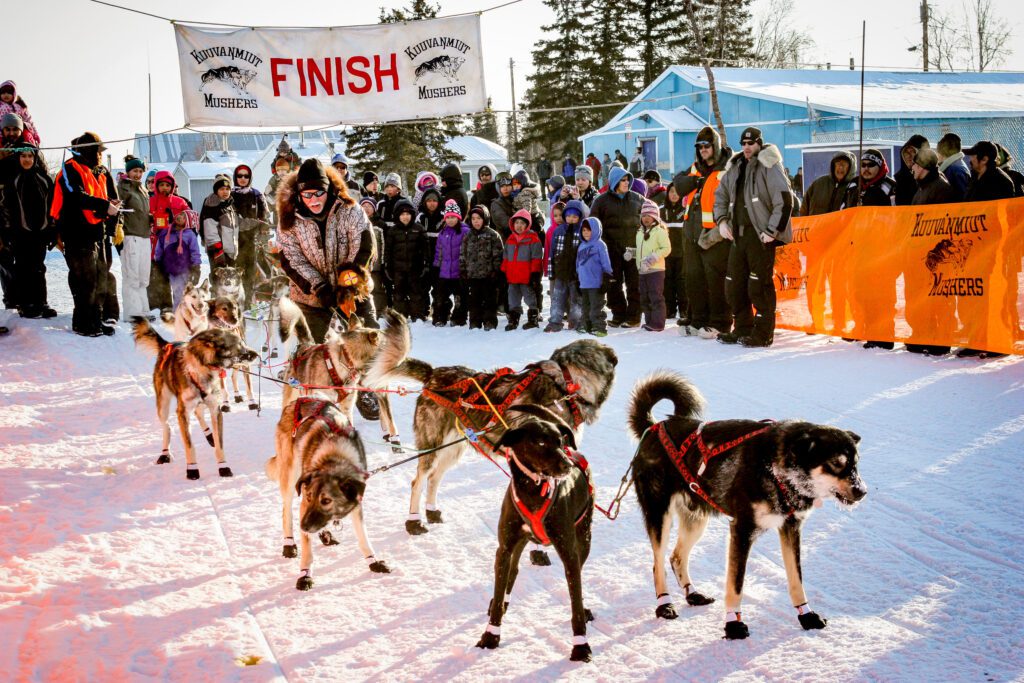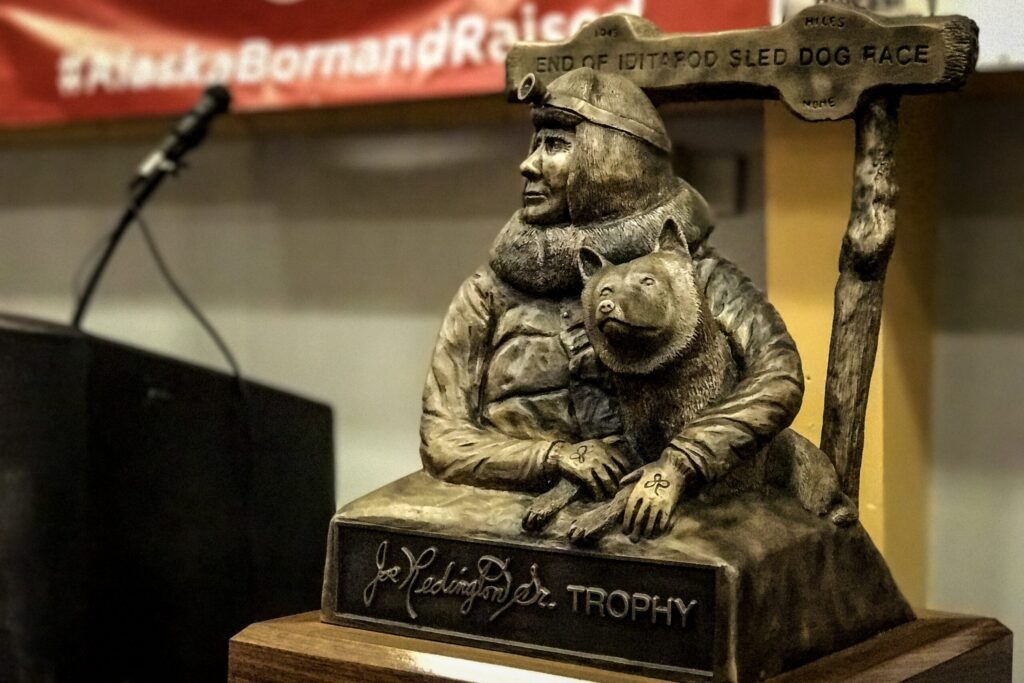Iditarod musher Mitch Seavey won the 2017 race in record time Tuesday afternoon. The Seward musher’s team ran a blistering pace from Fairbanks along winding rivers, tundra, and sea ice to Nome. But as KNOM’s Ben Matheson reports, the veteran musher is looking forward to achieving new levels of dog team performance in the peak of his career.
The trucks had barely finished dumping snow on Nome’s Front Street for the final stretch of the dog trail when Mitch Seavey roared up off the sea ice with his 11 huskies.
Seavey arrived at 3:40 p.m. and enjoyed hugs from family and friends. Mushing is the family business for the Seaveys. His father, Dan Seavey, ran the first Iditarod and greeted him in the bright afternoon sun.
Race officials draped his leaders Crisp and Pilot with harnesses of golden roses.
Seavey started the race with a schedule that would bring him in under record time, but his fast team, one that he says loves speed, eclipsed even that schedule.
“So that’s pretty cool, the trail was a little faster and smoother than it might have been. I really, strongly believe in preparing the dogs to go do what they’re going to do, and you shouldn’t really be surprised that it happens.”

Seavey won more than 70 thousand dollars, a new truck, and bragging rights as a three-time champion — and now, the fastest champion in 45 years of racing. Seavey slashed seven hours off the record set last year by his son Dallas Seavey, with his run of eight days, three hours, and 40 minutes.
To build a team with that speed, Seavey maintains a year-round training program that keeps the athletes active in the summer and has them achieving winter-level workouts by autumn. He doesn’t reveal details about a training regime that seems to involve running dogs at a ceiling of nine and a half to 10 miles per hour and preparing for the specific rigors of racing.
Mitch Seavey had a two-hour edge on Dallas Seavey leaving White Mountain Tuesday morning. After banking a luxurious amount of rest on the coast, his team ran a blistering pace to Nome to extend that lead by another 45 minutes on the 77 miles in from White Mountain. One of the key moves of the race that helped him build a defendable gap on his competition was pushing north to Huslia to take his 24-hour break. Other top racers rested earlier in Ruby or Galena.
“You know, if you’re going to take a late 24, you’re going to have to get there in hurry. You can’t lose a lot of time, because you need to be there in position. I felt like we came off that late 24 with a lot more energy than teams that may have taken their long break earlier.”

Speed has been the mantra since Seavey departed Fairbanks with 70 other mushers. At 57 years old, Seavey is the oldest musher to win the race, breaking the record he set in 2013 as a 53-year-winner.
“And I do feel like I’m getting younger, not older, so as long as this is a thing that interests me the most, this is probably what I’ll keep doing. At some point there might be other things when I grow up, but I’m having so much fun with these dogs. And we’ve turned a corner, like, there’s a whole new world of things we can do. What if we can go even faster? What if we can run the Iditarod on a good trail as fast as the North American? Who knows?”
That is, the Open North American Championships, a sprint mushing race.

This is the sixth year in a row in which Dallas or Mitch Seavey has won the race. As the elder Seavey this time ran away with the title, the real race unfolding over the Topkok hills and Safety Sound was for second place, as Girdwood musher Nicolas Petit and Willow racer Dallas Seavey battled for silver. Seavey says it was as they neared Nome that he spotted the team in pursuit.
“I kept checking. I saw no sign of him, and then, we stopped for another snack break on the top of Cape Nome, and after I take off, I look back, and he’s right behind me. He’s sneaky, I’ll give him that.”

Petit cut an already thin, 13-minute edge to less than five minutes in Nome, bringing the two teams side-by-side under the Burled Arch. It was here that Petit returned Seavey’s veterinarian log book — a piece of required equipment — to the musher at the finish line after he lost it at the Safety checkpoint where he dropped a dog. In Nome, Seavey and Petit joked about the race’s sportsmanship award:
“I appreciated it, thank you, that was very kind of you,” Dallas Seavey said. “No problem; remember that when we talk about sportsmanship [award]!” Petit said with a laugh.
Both Dallas Seavey and Petit joined the winner with times below the old speed record set a year ago. Following his best finish ever, Petit says his team is just getting started.
“They’re amazing. They’re just 2- and 3-year-old dogs, so watch out, Seaveys, we’re going to get you.”
Norwegian Joar Ulsom arrived in fourth place, while Jessie Royer drove her full string of 16 to claim fifth place.


